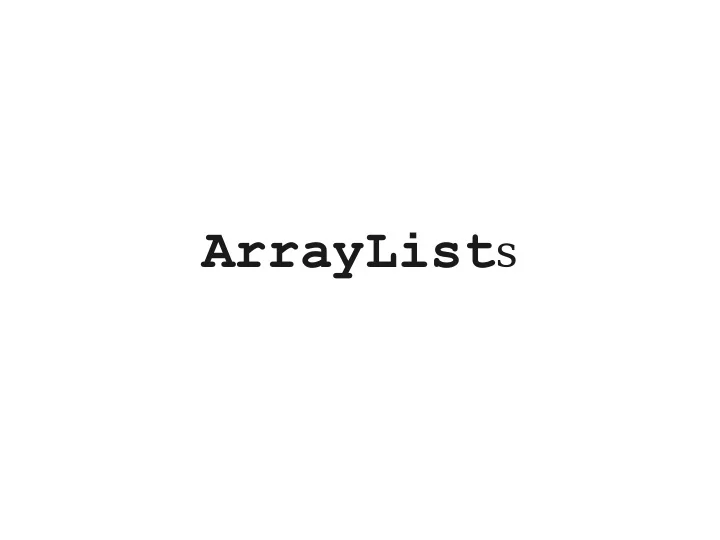

ArrayList s
An Interesting Article “Big Data's Impact in the World” http://www.nytimes.com/2012/02/12/sunday-review/big-datas-impact-in-the-world.html?src=me&ref=general&pagewanted=all
Announcements ● Hangman due in one week (Wednesday, February 22). ● YEAH hours right after lecture today: 4:15 – 5:15PM in 370-370.
Reading a File try { BufferedReader br = /* … open the file … */ while (true) { String line = br.readLine(); if (line == null) break; /* … process line … */ } We can only br.close(); remember one line } catch (IOException e) { /* … handle error … */ of the file at a } time!
Remembering Lots of Data ● Declare multiple variables. ● Makes code really hard to read. ● Have to know how much space in advance. ● Can't treat variables uniformly. ● Store it in the canvas. ● Only works for GObject s. ● Can't easily retrieve them ( getElementAt requires locations) ● Store it as a String . ● Impractical for non-text information.
Looking Closer at Strings H e l l o ! 0 1 2 3 4 5 ● A string stores a sequence of multiple characters. ● Can access characters by index by calling charAt . ● Every character type is the same. ● Namely, type char .
Looking Closer at Strings H e l l o ! 0 1 2 3 4 5 A string stores a sequence of multiple characters. Can access characters by index by calling charAt . Every character type is the same. Namely, type char . What if we don't want to store char s?
Introducing ArrayList 137 42 314 271 160 178 0 1 2 3 4 5 ● An ArrayList stores a sequence of multiple objects. ● Can access objects by index by calling get . ● All stored objects have the same type. ● You get to choose the type!
String s and ArrayList s ● Both String and ArrayList store zero- indexed sequences. ● String s store char s. ● ArrayList s store objects. ● ArrayList s, unlike String s, are mutable. ● You can insert, remove, and replace elements.
Importing ArrayList ● To use ArrayList , you must import java.util.*; ● Do not do the following! import acmx.export.java.util.*;
Simple ArrayList Operations ● You can append an element to an ArrayList by calling arrayList .add( value ) ● You can get the n th element of an ArrayList by calling arrayList .get( n ) ● You can see how many elements are in an ArrayList by calling arrayList .size()
Wrapper Types ● ArrayList cannot directly store primitive types. ● Java provides wrapper types that “wrap” a primitive type inside an object. int Integer double Double char Character boolean Boolean
Putting it all Together
Recommend
More recommend